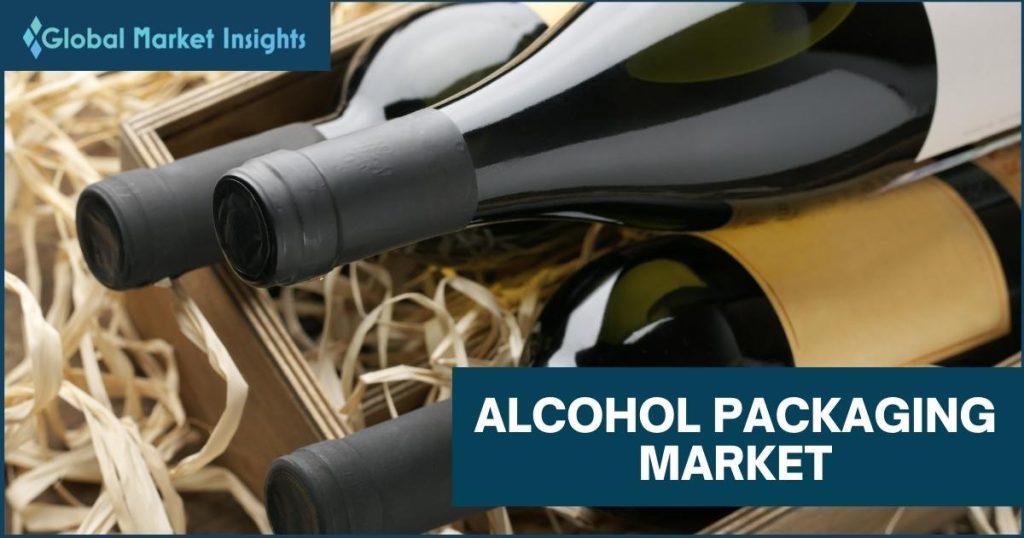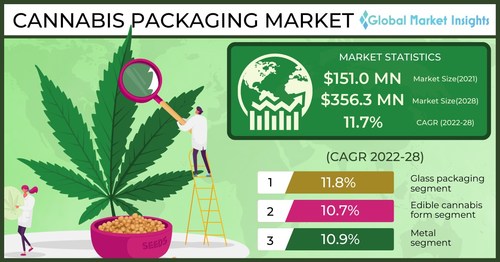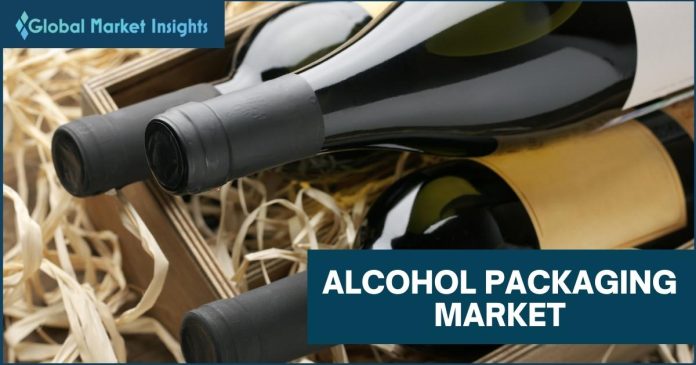Alcohol packaging market
Three pivotal trends shaping the global alcohol packaging market through 2028.
The cultural acceptance of alcoholic beverages across the globe has depicted a meteoric rise over the last many decades, leading to the alcohol packaging market emerging as a profitable business. Forecast to record transformative growth in the forthcoming years, this sector is slated to witness resurging demand through the resumption of some old trends and the birth of some new ones in the socioeconomic aftershocks of the pandemic.
The coronavirus pandemic has had a disruptive impact on most industries worldwide, including the alcohol market. The social distancing mandates that arrived in the wake of the pandemic’s fast spread decimated the hospitality sector, restaurants and bars included, leading to a sharp drop in sales as the lockdowns set in.
However, the alcohol packaging market was one of those sectors that witnessed a boom in demand as soon as relaxations were announced to the restrictions.
Meanwhile, the global drive toward sustainability has opened up a plethora of new avenues for the alcohol packaging industry, with many market players taking active efforts to ensure that their products are characterized by decarbonization and low environmental impact.
In light of these evolving industry scenarios, a recent report by Global Market Insights Inc., expects the global alcohol packaging market to hit a valuation of more than $75 billion by 2028.

1. Impact of COVID-19 on alcohol consumption and packaging demand
The COVID‑19 pandemic significantly altered the overall drinking habits of consumers, shifting the places of consumption from restaurants and bars to homes. This can be chalked up to the unique conditions the social restrictions and consumer apprehension created, which subsequently generated more impetus for individually packed beverages instead of the large kegs and barrels that drinking establishments typically have.
In fact, according to the Organisation for Economic Co-operation and Development (OECD), in the U.S. alone, online sales of alcoholic beverages jumped by an astounding 234% in 2020.
Meanwhile, the pandemic also fostered a rise in the drinking quantities of the average drinker. Data collected by OECD on preliminary government tax receipts showed that alcohol sales went by as much as 3% to 5% in the United States, the United Kingdom, and Germany in 2020 compared to the year prior. While these numbers are from the peak of the pandemic years, it can be safely assessed that the trend will sustain itself for the foreseeable future, giving the sector a stable stream of revenue.
2. The sustainability drive and the transformation of alcohol packaging
As with an array of other industry verticals that deal with carbon-heavy materials, alcohol packaging market contenders are also facing immense pressure to work on reducing their ecological footprint.
The public is becoming more aware of the environmental repercussions of single-use plastics, and other carbon-intensive materials. To that end, alcoholic beverage producers must stay ahead of the curve and show consumers that they are doing their part if they are to maintain their relevance and brand image in accordance with changing times.
Case in point, leading Danish brewer Carlsberg Group, which in 2019 unveiled two of its latest Green Fibre Bottle prototypes, or the world’s first beer bottles made of ‘paper’. At the event, Carlsberg stated that it would be testing the barrier technology through the prototypes, with the goal of finding a solution to achieve 100% bio-based bottles without any polymers.
True to its word, in June of 2022, Carlsberg launched a pilot of its newest generation of the ‘Fibre Bottle’, launching over 8,000 samples of Fibre Bottles across eight Western European markets. Outcomes of the trial would generate valuable feedback from actual consumers to inform the design of the next generation of the bottle.
Such efforts are not limited to a single industry player, back in 2020, drinks maker, Bacardi announced that it had developed the world’s first completely biodegradable spirits bottle, with a commitment to sell Bombay Sapphire, Bacardi, and Grey Goose in these bottles starting 2023. All in all, it can be deduced that ‘low-carbon’ and ‘recyclable materials’ are the way to go when considering the future of alcohol packaging.
3. The rebirth of social drinking post COVID-19
There is a significantly deep-rooted culture around drinking and socializing that spans thousands of years. Before COVID-19, social drinking was a common practice across a majority of developed and emerging economies in Europe, Asia, and the Americas. Post the pandemic, with life getting restored to normalcy, the practice is making a steady return worldwide.
According to the American trade group, Brewers Association, in 2021, beer volume sales in the U.S. were up 1%, with the sales volume of craft brewers growing by 8%. Craft beer’s retail dollar sales increased 21%, hitting $26.8 billion, allowing the segment to account for 27% of the U.S. beer market, which is valued at $100 billion. The trade group chalked up these higher dollar sales to beer volumes’ shift back to bars and restaurants, effectively spelling out an uptick in opportunities for the packaging sector.
A similar trend is being observed in Asia, where drinking culture is making a strong comeback in countries such as Vietnam, Japan, and South Korea, among others. Last month, Sabeco, the largest beer maker in Vietnam, invested over $28 million to install advanced filling equipment at its factory in central Vietnam, to help grow its annual beer making capacity to more than 250 million litres, directly creating more impetus for beer bottles. Meanwhile, in South Korea, demand for alcoholic beverages has sharply increased across the board. In 2020, the country’s wine imports increased by 27.3% from the year prior, reaching over $330 million. Its whisky imports soared beyond 70% within the first 10 months of 2021 owing to strong demand.

Also Read: Innovations in Cannabis Packaging

Final thoughts:
The pandemic significantly changed the playground for the alcohol packaging industry, birthing a new trend of having alcoholic beverages delivered to consumers’ homes, and its gradual departure is fostering the rebirth of the age-old trend of social drinking. Over the forthcoming years, these two trends are expected to go hand-in-hand and bolster industry expansion. Meanwhile, the sector’s sustainability drive is expected to lead to the emergence of low-carbon, biodegradable materials as the packing material of choice.
Disclaimer: This post is for knowledge and information purpose.
You can Read: Flexible packaging and green movement in the industrial ecosystem


